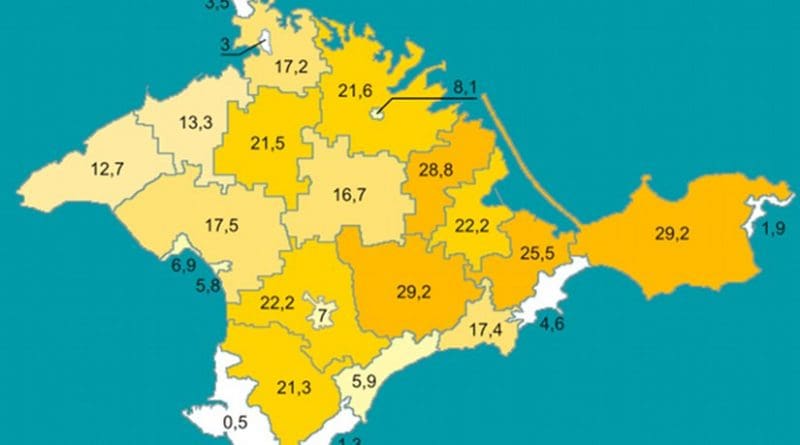Russians Aren’t The Only ‘Divided People’ In Eurasia – OpEd
By Paul Goble
In recent months, Vladimir Putin has been pushing the idea that the Russians are “a divided people” as a result of the disintegration of the Soviet Union, a disturbing notion that recalls Hitler’s discussion of the Volksdeutsch abroad in the 1930s (windowoneurasia2.blogspot.com/2018/04/putin-views-russians-as-divided-people.html).
But Putin may face an even more immediate reaction to his words than the ones that might suggest: Russians are far from the only “divided people” in Eurasia; and a large number of those who are divided were divided less as a result of broader changes in political borders than by Moscow’s acts of ethnic engineering designed to allow it to divide and rule these peoples.
Some in these nations are picking up on Putin’s notion but applying it to their own situation as OnKavkaz’s Amina Suleymanova shows in the case of the Circassians, the Avars, the Lezgins, the Karachays, the Balkars and the Crimean Tatars (onkavkaz.com/news/2222-est-li-u-razdelennyh-avarcev-lezgin-karachaevo-balkarcev-i-krymskih-tatar-analog-cherkesskogo-f.html).
The Circassians are the archetypical divided people of Eurasia, the OnKavkaz journalist points out. They are unified by their history and by making the Day of the Circassian Flag, an even marked by Circassians regardless of where they live and how they are called at the present time.
Within Russia, the Circassians have various names: Kabardins in the Kabardino-Balkar Republic, Cherkess in the Karachayevo-Cherkess Republic, Adygeys in Adygeya, and Shapsugs in Krasnodar Kray. But they all identify with each other and with Circassians living elsewhere as Circassians in the first instance.
With regard to the Avars, Shamil Dzhamaluddinov of the New World Project says that “unfortunately” they do not yet have any symbol that is as universally recognized as the Circassian flag, a reflection of the fact that Avars have been divided into “dozens of states with various political systems” for a millennium.
“Of course,” he says, the Avars have heroes like Imam Shamil, but he like other Avars is claimed by other peoples as well. “All these personalities are pan-Daghestani or even pan-Caucasian dignities.” Avars in Daghestan have no problem with identity but those in Georgia and Azerbaijan because of their small numbers often do.
Some Avar intellectuals and young people consider the flag of the former Avar khanate on which a wolf is shown as a common national symbol. But “another part of Avar activists consider this flag as only the one of the Khunza Avars.” The same division exists regarding the Avar national hymn.
Amil Sarkarov, the vice president of the Federal Lezgin National-Cultural Autonomy, says the Lezgins do not have any generally recognized symbols. “Nevertheless,” he continues, “there are several variants of flags which particular activists propose as all-national” and they may be accepted. One problem is that some Lezgins object to symbols inconsistent with Islam.
Khafiza Chotchayeva of the Elbrusoid Foundation says that “the two parts of our people, the Karachays and the Balkars who live in two different republics,” increasingly are coming together to mark common experiences like the deportation and return from deportation and their common focus on Mount Elbrus.
And Edem Umerev, head of the Moscow Society of Crimean Tatars, says that members of his nation have a strong national identity and aren’t a divided people even though they live in different states. They were a powerful country on their own for far longer than the US has been independent, he points out, and they have symbols that descend from that time.

